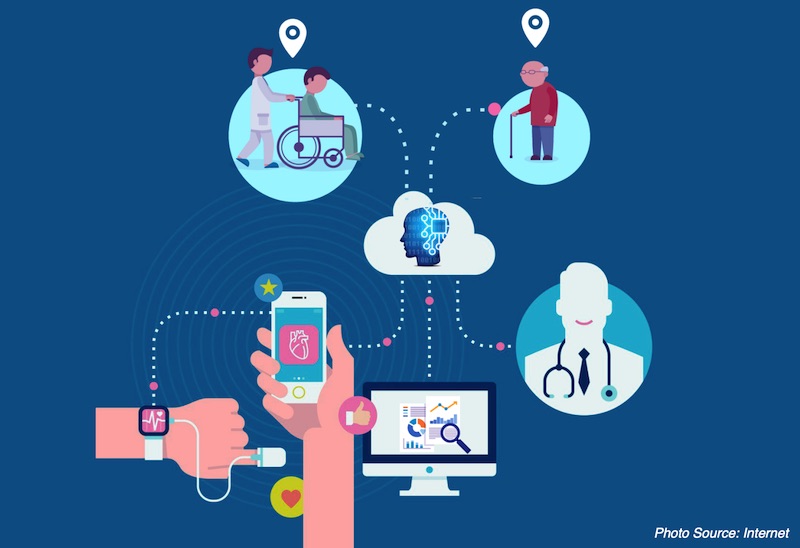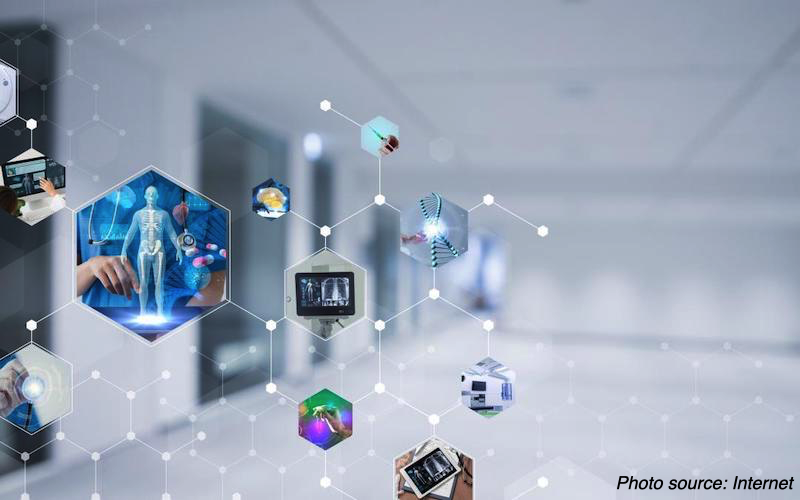
Healthcare is an essential service to everyone. AIoT can help health insurance to deliver Personalized policies
Healthcare is an enormous ecosystem with boundless applications of AIoT technologies. The insurance industry is continuously boosting the IoT technology in multiple product lines in order to predict and prevent the more risk-prone areas. Smart sensors enable the collection and monitoring of human vital signs in real-time. These data reflect our physical and mental status. Such large volume of data harvested by the sensors is completely out of human interpretation and would have to be processed and analysed by AI algorithms to produce meaningful indications for us to adopt right measures of care so to improve our health conditions.
Nowadays, the AIoT technologies are increasingly integrated into the medical services, from hospitals, clinics, diagnostics facilities, health insurance, pharmaceutical sector, real-time health systems (RTHS), robotics, smart pills, other care-related establishments, and so on. Therapeutics, diagnostics and infrastructure will all be affected by the introduction of digital health powered or augmented by AIoT technologies.

AIoT technologies empower the personalized health policy and health management
Both sensors connected directly to the human body and sensors installed in the home appliances can help insurers to evaluate the lifestyles of the policyholders. The clients who adopt healthy habits can be rewarded so to incentivise the positive behaviours. With the help of IoT, doctors are able to access real-time information about the patients, prepare plans and conduct treatments from remote.
More matured specialized sensors can anticipate alerts for patients with certain diseases such as diabetics. There are affordable, non-invasive, wearable electronic devices which would send an alert while being worn on the wrist, ankle, or bicep of persons with diabetes whose blood glucose has begun to trend downward. The use of such IoT components facilitate patients to handle their medical emergencies.
Developing innovative AIoT healthcare solutions is on every government’s agenda
The shift in distribution of a country’s population towards older ages is known as population ageing. According to the publication of WHO - Aging and Health, people worldwide are living longer and the pace of population aging around the world is increasing dramatically. With advances in medicine helping more people to live longer lives, the number of people over the age of 60 is expected to double by 2050 and will require radical societal change.

A longer life brings with its opportunities, yet the extent of these opportunities and contributions depends heavily on one factor: health. There is, however, little evidence to suggest that older people today are experiencing their later years in better health than their parents. While rates of severe disability have declined in high-income countries over the past 30 years, there has been no significant change in mild to moderate disability over the same period.
For the people who are aged with an increasing number of continuing medical conditions and inadequate finances to employ over health care, it’s understandable that developing AIoT solutions becomes one of governments’ critical guiding principles. Such innovative solutions will be able to encourage self-care among patients and help healthcare institutions better manage patients medical expenditures by associating better the data with their health-conditions.
TECHENGINES.AI positions itself to specialized in AIoT technologies (AI and IoT) for insurance. We already helped our clients to develop various health insurance policies. At the same time, we help to make insurance simple, convenient and easy to access for the end customers.